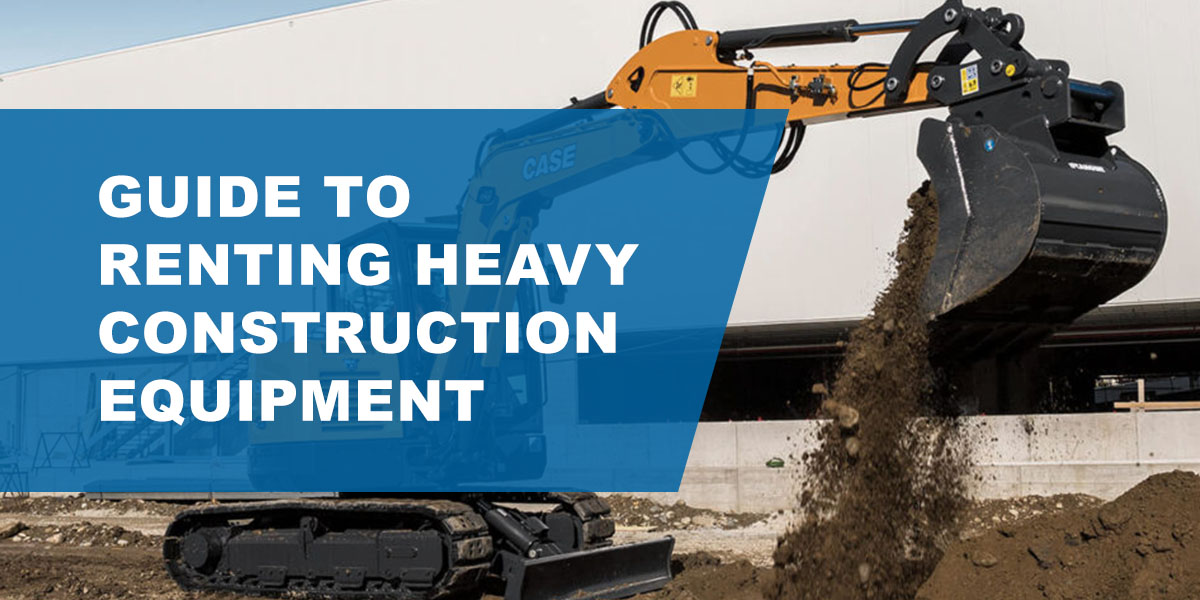Heavy Equipment Rental: Big Machinery for Any Type Of Construction Project
Maximize Your Budget Plan by Comprehending the Costs Connected With Construction Equipment Rentals
Recognizing the complete range of expenses connected with building equipment services is important for maximizing your budget plan. What approaches can be utilized to properly handle these expenses and make sure a much more reliable rental experience?
Overview of Rental Prices
When considering construction equipment rentals, comprehending the associated costs is paramount for reliable budgeting and task preparation. Rental expenses can vary substantially based upon a number of factors, consisting of equipment kind, duration of service, and area. The initial rental fee usually shows the devices's market need and its linked functional abilities, affecting the general expense.
Along with the base rental rate, secondary costs may emerge, such as transport fees, fuel surcharges, and upkeep fees. It is necessary to represent these additional expenditures to properly evaluate the complete cost of renting out equipment. Moreover, the rental duration can affect prices; longer rentals might get approved for discounted rates, while short-term rentals could sustain higher everyday charges.

Breakdown of Rental Rates
A thorough understanding of rental prices is necessary for professionals and task managers aiming to optimize their spending plans. Rental rates for building devices normally contain a number of components, consisting of base prices, time-based costs, and use charges.
Base prices are the core charges connected with the leasing of the devices, frequently identified by the kind and dimension of the equipment. These prices can vary significantly, affected by aspects such as devices need, schedule, and regional market fads. Time-based costs, which may be daily, weekly, or monthly, serve to accommodate various task timelines and rental periods.
Additionally, rental prices may include use costs, which apply when devices is used beyond a specified threshold, making certain that the rental firm can make up deterioration. Seasonal need changes can additionally influence rental rates, with peak building seasons usually regulating greater rates.
Additionally, understanding the rental company's plans concerning maintenance and insurance policy can provide more insight into the overall cost framework. By examining these elements, professionals can make educated choices, making sure the choice of rental devices straightens with both project requirements and budget constraints.
Added Charges to Consider
Recognizing the ins and outs of added fees is crucial for professionals to handle their total rental costs efficiently. Past the basic rental prices, various auxiliary fees can substantially influence the total expense of tools service. These charges typically include shipment and pick-up charges, which can differ based on range and logistics associated with transporting the tools to and from the task website.
Furthermore, some rental firms might enforce fuel surcharges if the equipment is returned with much less gas than when leased. It is additionally vital to understand possible cleaning costs, particularly for specific devices that requires complete maintenance after usage.

Completely examining the rental contract and clarifying these additional costs upfront can help contractors ensure site here and stay clear of unexpected costs that budgets stay undamaged throughout the project lifecycle.
Maintenance and Repair Costs
Regular maintenance and repair work expenses are typically overlooked aspects that can substantially affect the total expense of building and construction equipment rentals. When leasing tools, it is crucial to take into consideration not just the rental fees however additionally the possible costs related to maintaining the machinery in optimum operating problem.
Many rental business consist of standard maintenance as part of the rental arrangement; nonetheless, much more extensive fixings or unforeseen breakdowns can result in extra expenditures. It's important to examine the rental agreement carefully to recognize what upkeep services are covered and what responsibilities drop on the occupant.
In addition, tools that is not well-kept can cause ineffectiveness on duty site, possibly boosting and causing delays project expenses. To alleviate these risks, it is recommended to perform normal examinations and preserve open communication with the rental carrier concerning any kind of issues that develop throughout use.
Insurance and Responsibility Costs
Insurance and liability costs are critical components that can dramatically impact the total expenditure of building and construction see here tools services (construction equipment rentals). These expenses guarantee that both the rental business and the customer are shielded from possible economic losses arising from mishaps, damage, or theft during the rental period

Furthermore, clients need to recognize any kind of deductibles or exclusions in the insurance policy, as these can impact potential out-of-pocket expenses. Comprehending the terms and problems of any insurance policy coverage is essential to prevent unanticipated prices. Inevitably, budgeting for insurance coverage and responsibility expenses can help make certain a click here for info smoother rental experience and protect against financial risks connected with building and construction jobs.
Conclusion
In verdict, a thorough understanding of the expenses associated with building and construction tools leasings is important for reliable budget plan administration. Eventually, informed decision-making concerning devices services contributes to the general success of construction endeavors.
Rental costs can differ considerably based on numerous elements, consisting of equipment kind, period of rental, and place (forklift rental). The rental duration can influence rates; longer rentals might certify for discounted rates, while temporary services could sustain greater daily costs
By performing comprehensive study and engaging with reputable rental companies, professionals can properly browse the complexities of rental pricing, eventually maximizing their monetary sources.
Beyond the typical rental prices, various supplemental costs can substantially influence the complete expense of equipment rental. Rental firms typically give obligation insurance coverage that covers injuries to third events or damage to residential property, while devices damage insurance coverage can cover the cost of fixings or substitute if the leased devices is damaged.